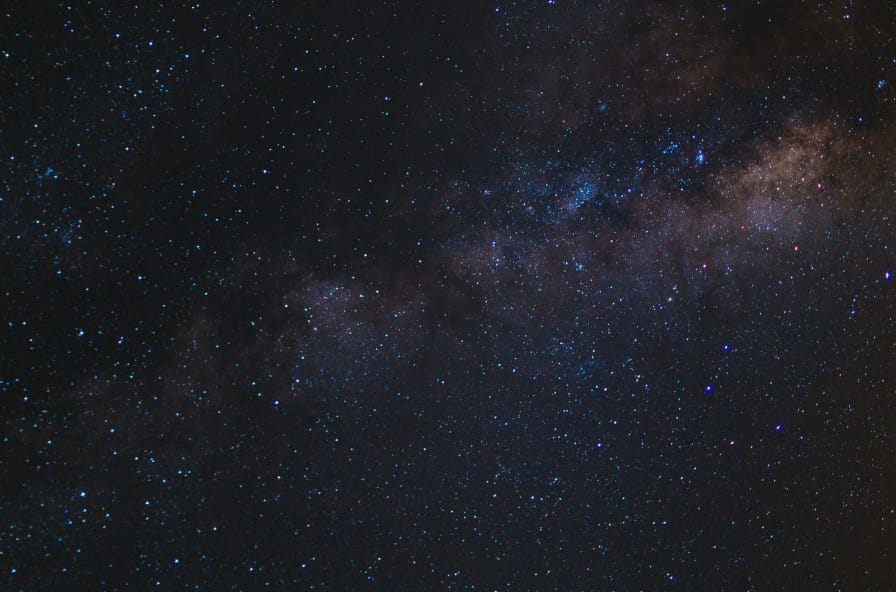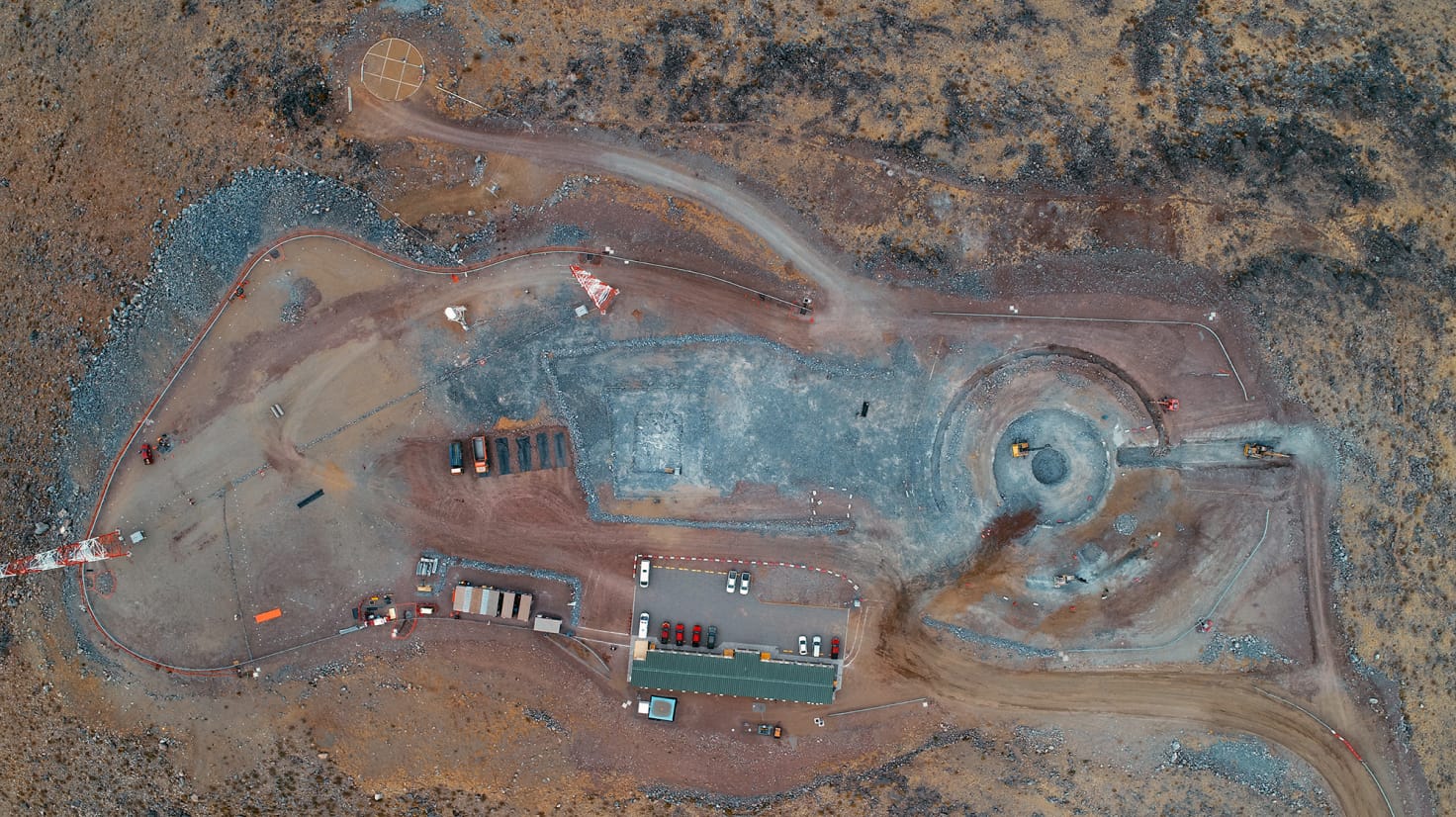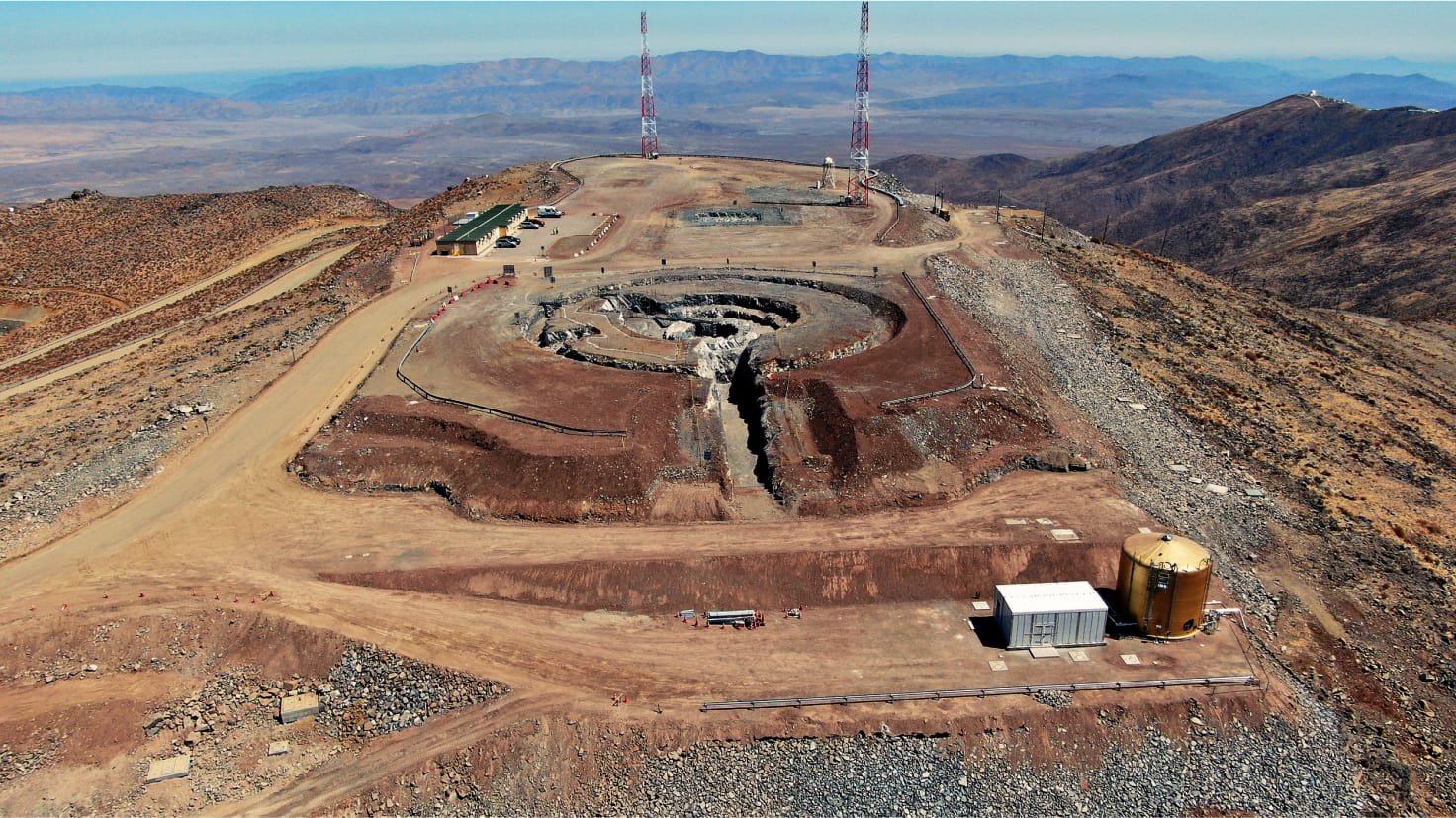Read Video Transcript
A rendered video shows a birds eye view of the completed Giant Magellan Telescope standing tall at its home, the Las Campanas peak in Chile’s Atacama desert, with the telescope pointed at the Milky Way in the night sky.
Сlose
Coordinates
29°02'54.0"S 70°41'01.0"W -29.048333, -70.683611
Chile: Our Window Into the Universe
The Giant Magellan Telescope is under construction on Las Campanas Peak at the southern edge of Chile’s Atacama Desert, the driest non-polar desert in the world. The site is located within the Las Campanas Observatory (LCO) near the twin Magellan Telescopes, approximately 160 kilometers northeast of the coastal city of La Serena. From this unrivaled vantage into the southern sky, the Giant Magellan Telescope will be one of the world’s most powerful eyes into the galactic center of the Milky Way and millions of lightyears beyond.

2,514 M
ALTITUDE
ALTITUDE

300+ NIGHTS
OF CLEAR SKY
OF CLEAR SKY

160 KM FROM
CITY LIGHTS
CITY LIGHTS
Science at Its Best
The Atacama Desert in Chile is one of the best locations on Earth to explore the heavens. The desert is an astronomer’s paradise because of its high altitude, clear skies, dark nights, and steady atmosphere. These are some of the reasons why the Carnegie Institution for Science, one of the Giant Magellan Telescope’s founding partners, chose the Atacama Desert for their renowned Las Campanas Observatory (LCO). The location’s scientific value is supported by five decades of active telescope use.
The Giant Magellan Telescope’s location in the Southern Hemisphere provides astronomers with direct observation of many celestial objects of scientific interest, including the galactic center of the Milky Way, the nearest supermassive black hole (proximity to Sagittarius A*), the nearest star to our Sun (Proxima Centauri), the Magellanic Clouds, and many of the closest galaxies and exoplanets. This is also part of the reason why the southern sky is home to many of the world’s most advanced ground-based telescopes, like the Atacama Large Millimeter/submillimeter Array (ALMA), the world’s largest radio telescope studying light from the coldest and oldest objects in our universe. In addition, many of the most advanced space telescopes, like the James Webb Space Telescope (JWST), have key science mission directives in the southern sky.
The Giant Magellan Telescope’s location in the Southern Hemisphere provides astronomers with direct observation of many celestial objects of scientific interest, including the galactic center of the Milky Way, the nearest supermassive black hole (proximity to Sagittarius A*), the nearest star to our Sun (Proxima Centauri), the Magellanic Clouds, and many of the closest galaxies and exoplanets. This is also part of the reason why the southern sky is home to many of the world’s most advanced ground-based telescopes, like the Atacama Large Millimeter/submillimeter Array (ALMA), the world’s largest radio telescope studying light from the coldest and oldest objects in our universe. In addition, many of the most advanced space telescopes, like the James Webb Space Telescope (JWST), have key science mission directives in the southern sky.
The Giant Magellan Telescope will take advantage of LCO’s remote location, away from light pollution and the thin atmosphere of Las Campanas Peak, LCO’s highest point at 2,514 meters above sea level. On the peak, telescope seeing is among the best in the world. The median seeing is 0.63 arcseconds at 5000 Å, with the best quartile below 0.50 arcseconds. The desert’s low precipitable water vapor content improves the telescope’s sensitivity at infrared wavelengths, providing amazing optical and infrared observing conditions for more than 300 nights of the year.
The Observatory
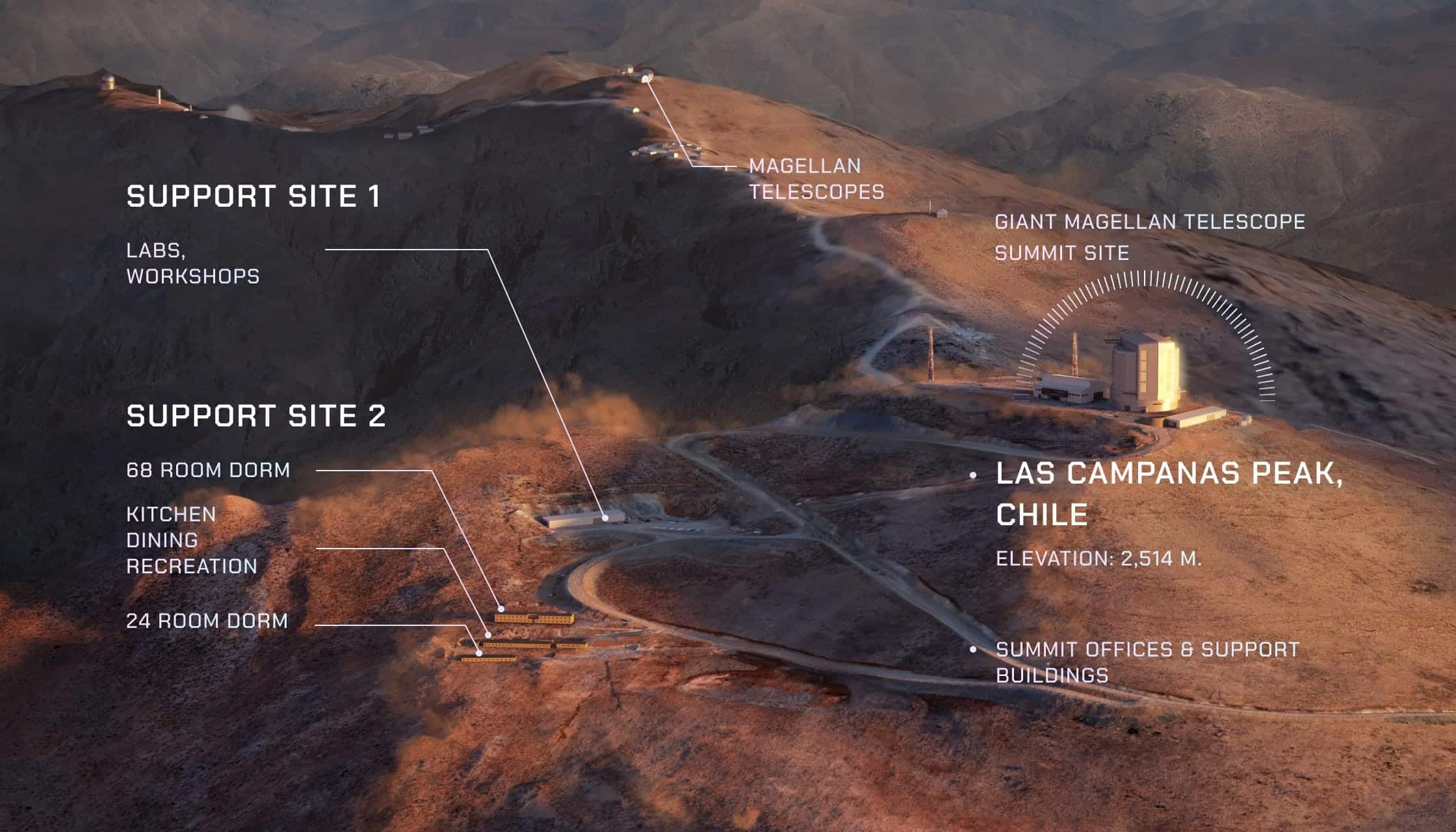
Prime Conditions
Moisture in the Air
Moisture in the air absorbs light and can form clouds, blocking the telescope’s view of the universe, so dry areas with no clouds are best for optical quality.
Optical Turbulence
The Earth’s atmosphere creates optical turbulence, which causes image blurring, so locations with high altitudes and more stable atmospheres are generally best for image quality.
Light Pollution
City centers and large suburban areas create light pollution at night, so dark regions far away from sources of light pollution are best for viewing the faintest objects in the universe.
Wind
Wind buffets the telescope and can cause images to jitter, so areas with calm winds and telescopes with optimized wind damping designs are best for optical performance.
Extreme Temperature
Extreme temperature swings during the night can distort the shape of a telescope’s mirrors and decrease image quality, so areas with stable climates are best for optical quality.
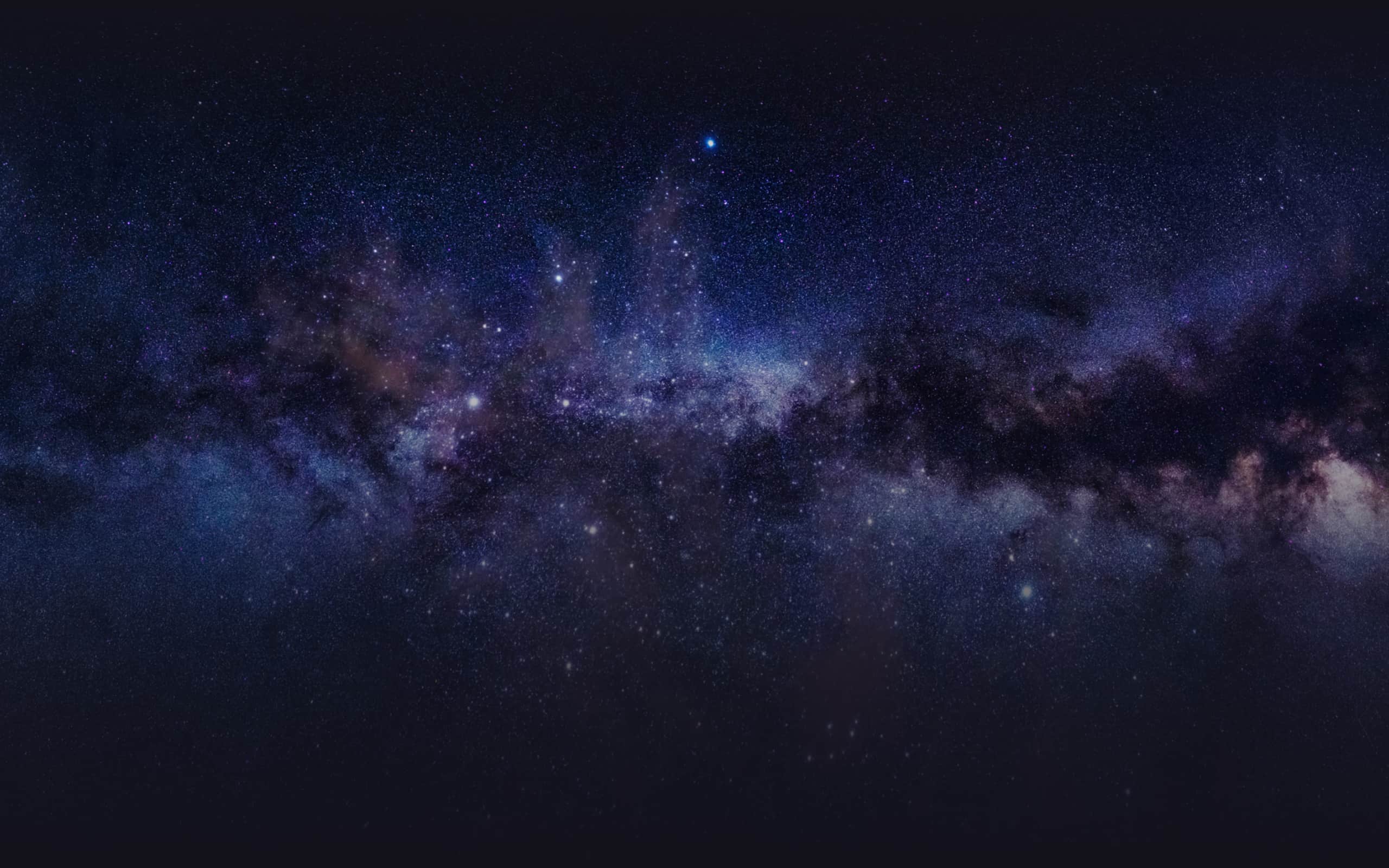
Chile Is an Astronomical Powerhouse
Chile is a special place. Since the mid-20th century, Chile has been the center of important astronomical discoveries. It will continue to be the world’s premier astronomy research center with the addition of the Giant Magellan Telescope. By 2030, Chile will host nearly 70% of the world's astronomical infrastructure.
As the astronomical capital of the world, Chile provides synergistic scientific collaborations between existing telescopes, international universities, and local communities. The international collaboration fosters the expertise required to build, operate, and maintain the most advanced telescopes ever engineered. Large scientific projects like the Giant Magellan Telescope rely on the strong international partnerships that the people of Chile have generously embraced. This Chilean relationship with astronomy has skyrocketed the prestige of local research universities and has contributed to an innovative economic boom.
As the astronomical capital of the world, Chile provides synergistic scientific collaborations between existing telescopes, international universities, and local communities. The international collaboration fosters the expertise required to build, operate, and maintain the most advanced telescopes ever engineered. Large scientific projects like the Giant Magellan Telescope rely on the strong international partnerships that the people of Chile have generously embraced. This Chilean relationship with astronomy has skyrocketed the prestige of local research universities and has contributed to an innovative economic boom.
The Giant Magellan Telescope will be able to coordinate scientific efforts with ground-based and space-based telescopes working at various wavelengths, making Chile the ideal location for synergistic astronomical observations and high-impact discoveries.
Enjoy the Progress
Items —
Broader Impacts in Chile
The Giant Magellan Telescope is taking a leading role among observatories in Chile in education, research access, and inclusive astronomy. Here are some of the exciting initiatives we continue to grow:
-
Local K-12 EducationLed by our Chilean offices, we have developed a local outreach program that provides thousands of Chilean K-12 students with the opportunity to learn about astronomy. With support from the US Embassy in Chile and the Chilean Minister of Science, our observatory field trip programs and LabMóvil ConCiencia Astronomía travel around Chile to bring science education to remote and underserved communities. The unique traveling lab includes an inflatable planetarium and portable telescopes for an inspiring hands-on experience.

-
Inclusive EducationWe partnered with Planetario de Medellín (Colombia) to create the “Universe With All Senses” backpack, a set of tactile scale models of our solar system and other interesting celestial objects. This accessible material, already available for local production in Chile, inspired the creation of the Inclusive Astronomy Handbook for Teachers, developed by the Giant Magellan Telescope and the educational innovation consultant AP21 and supported by prominent astronomical institutions in Chile committed to inclusive astronomy outreach and education. The Handbook is an innovative and free online resource for teachers to use astronomy as a vehicle for diversity, inclusion, and quality science education.
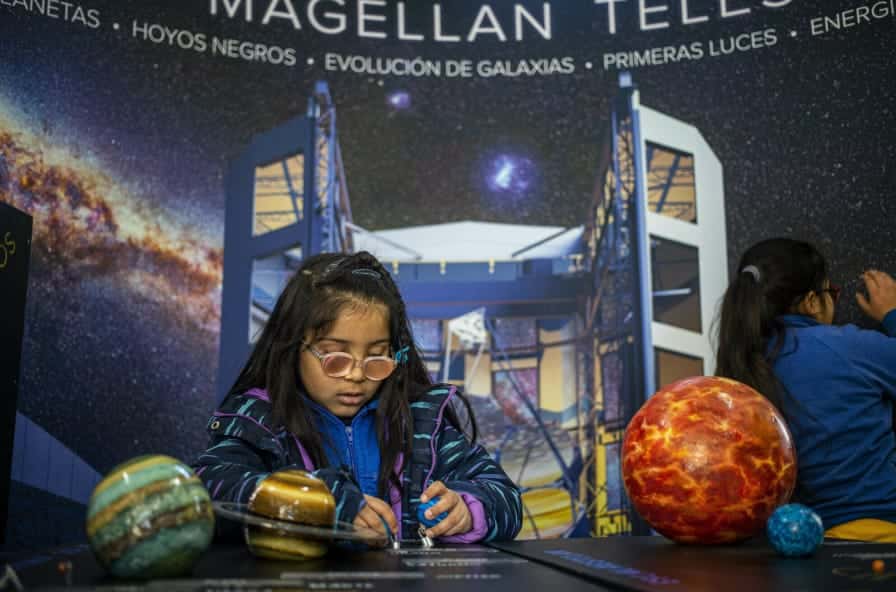
-
Government RelationsWe operate in Chile under a cooperative agreement with the University of Chile. The government of Chile has recognized this agreement through a presidential decree recorded by the foreign ministry.
We frequently meet with various official agencies in Chile to coordinate actions regarding light and air pollution. We are members of the Fundación Cielos Oscuros (FCC) board, and we collaborate with the Sociedad Chilena de Astronomía (SOCHIAS), the Agencia Nacional de Investigación y Desarrollo (ANID), the Ministry of Foreign Affairs, and the Ministerio del Medio Ambiente (MMA).
-
University ResearchThe Giant Magellan Telescope has a research agreement with the University of Chile to grant 10% of the observing time to astronomers working at Chilean institutions. We also sponsor academic research activities and actively participate in university committees.

-
Local EconomyThe construction of the Giant Magellan Telescope creates hundreds of local jobs and drives scientific advancement at Chilean universities.

-
Dark Skies PreservationPreserving the amazing skies of Chile (not only in clarity, lack of clouds, and stability but also in darkness) is essential to keep Chile the best astronomical location in the world. The Giant Magellan Telescope is a founding member of the Fundación Cielos de Chile (FCC), an organization dedicated to protecting the dark skies of Northern Chile. We are long-time supporters and collaborators with the Oficina de Protección de los Cielos de Chile (OPCC), now restructured to be the technical branch of the FCC. Together with government officials, the FCC and the OPCC work to establish periodic improvements to the Norma Lumínica, the regulatory body for public and other open spaces illumination, and astronomy-friendly fixtures.
